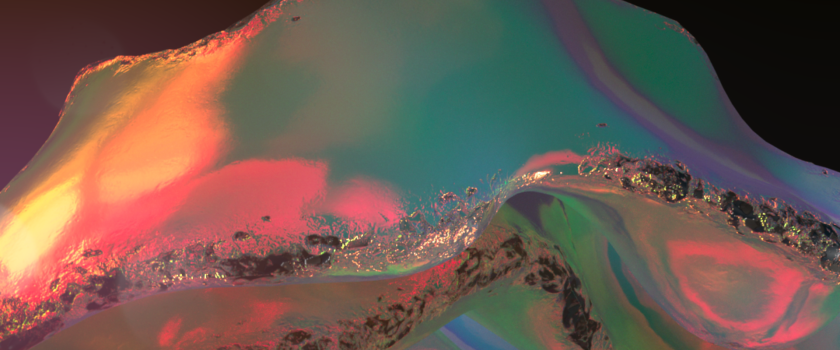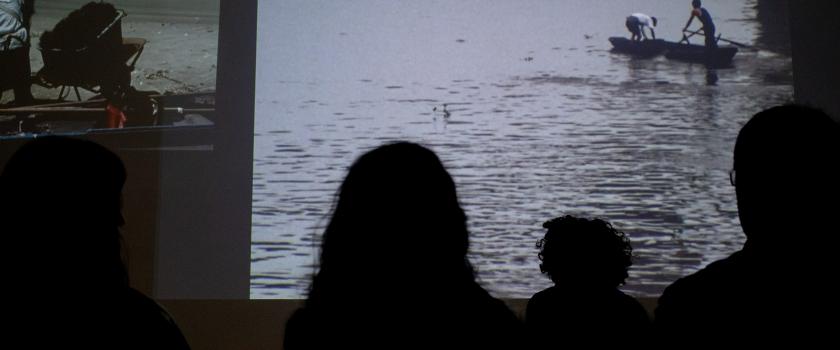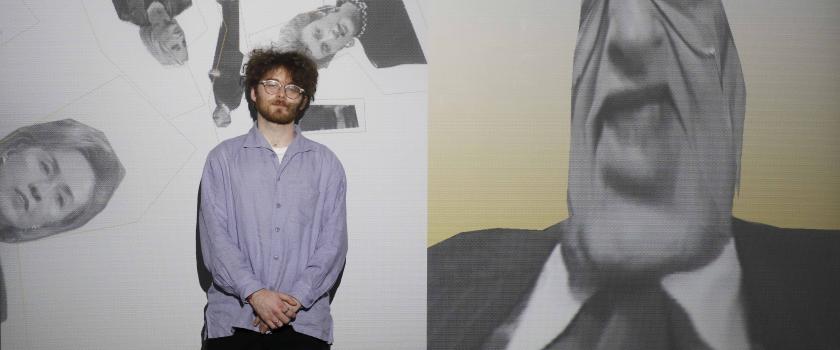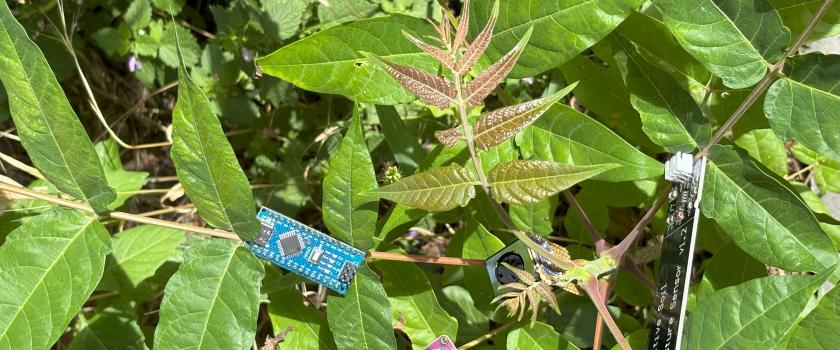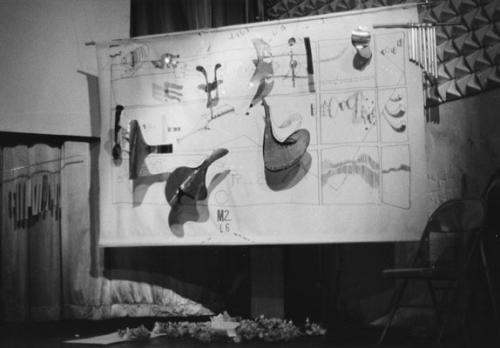On documentary and perceptual aspects of video
Here is a translated part of the famous interview by Jud Yalkut “The Kitchen: An Image and Sound Laboratory: A Rap with Woody and Stein Vasulka, Shridhar Bapat and Dimitri Devyatkin“, which aired on April 1, 1973 as part of the Artists and Critics series on WBAI-FM in New York. The interview took the form of an hour-long panel discussion, and the participants – Woody and Steina, Shridhar Bapat and Dimitri Devyatkin, the founders of The Kitchen – discussed the concept of the space, its preference for electronic experimentation over conceptualism, the concept of The Kitchen as a theater, and its evolution from a knee-jerk community into a professional arts organization.
In the section translated to Czech, the panelists discuss the documentary and perceptual aspects of video.
Jud Yalkut (1938-2013) was an experimental filmmaker, curator and pioneer of intermedia art. His work had a broad scope: it was characterized by crossing and questioning the boundaries of individual media. He created a dialogue between film and video, performance and installation. He collaborated on major intermedia projects with many artists and filmmakers, exemplified by a series of video-film works with Nam June Paik. His manuscript Electronic Zen is a seminal literary work for the study of the history of the alternative video scene emerging in 1960s New York.
Dimitri Devyatkin (b. 1949) is a director, producer, writer, journalist and, last but not least, an artist working with video. He was one of the founders of The Kitchen in New York in 1971 and the director of the first edition of the International Computer Arts Festival held on its grounds. His work combines digital media, computer art, and film. He lives and works in New York.
Shridhar Bapat (1948-1990) was a video artist and a key figure in the emerging video art scene in New York in the 1970s. He was involved in the dramaturgy and programming of The Kitchen in its early years and the New York Avant-Garde Festival. In 1973, he became the director of The Kitchen.
Translated by: Lenka Dolanová
WOODY: Přesně. Je to jediné médium, které poskytuje takovou přirozenost záznamu reálného života. Dvakrát váháte: mám to tlačítko zmáčknout?
JUD: Opravdu o tom musíte přemýšlet.
WOODY: Video má možnost zaznamenat běžný život dvacátého století v míře, která nikdy předtím možná nebyla. Na těch páskách to vidíme. Jsou krásné, protože jsou pojednané s takovou neformálností. Televizní kamery lidé rychle přehlédnou, nevěnují jim pozornost. Jsou nehlučné.
JUD: Nejlepším způsobem používání videa je žít s ním.
WOODY: Správně. Někdy litujete, že Homér nenapsal o tom malém náměstí, kam přicházeli žebráci a povídali si, musel si vždycky zvolit nějaké podivné hrdinské příběhy z minulosti. Kéž by se velcí spisovatelé minulosti soustředili na triviální okamžiky! Bylo by tak krásné číst o deštivém dni v Athénách, ale až video vám poprvé bude schopno zprostředkovat deštivý den v New Yorku, protože bude nahraný.
SHRIDHAR: I to vyžaduje určitou dávku disciplíny, protože jsme viděli hodně takových pásek. Osoba neformálně nahrává svůj život, pokud je v něčem zručná, a ta neformálnost vyžaduje hodně schopností a cvičení. Schopnost být tam ve správný okamžik…
WOODY: …schopnost otočit těmi správnými knoflíky…
SHRIDHAR: …se správným kusem vybavení.
JUD: To je nová definice konceptu rozhodujícího okamžiku.
WOODY: Je to jen blíž tomu okamžiku, ještě to tam není. Podobně uvažuji o percepční oblasti videa. Odhaluje a pomáhá uzavřít mezeru mezi obrazem a mozkem, ale pouze se tomu blíží. Ještě tam ve skutečnosti není, možná nikdy nebude…
JUD: …dokud nenaťukneme samotné synapse.
WOODY: Dokonce i potom budeme ve vzdálenosti pár mikronů. Pořád tam bude vzdálenost mezi rovinou realizace, mozkem a obrazem.
JUD: Ta vzdálenost souvisí s konceptem vědomí, s uvědoměním, že skutečné “já” v nás je vládcem všech dalších “já”. A je opravdu vzdálené, téměř odcizené v rámci vlastního já, které se stává spíše pozorovatelem. Musí se vyvinout do duchovnějšího stavu, kdy se stane součástí způsobu, jakým použijeme média k rozšíření našeho nervového systému.
WOODY: Správně. Všechno to tam je. Věříme ve video.
The interview comes from the unprocessed archive of Vašulka Kitchen Brno.
